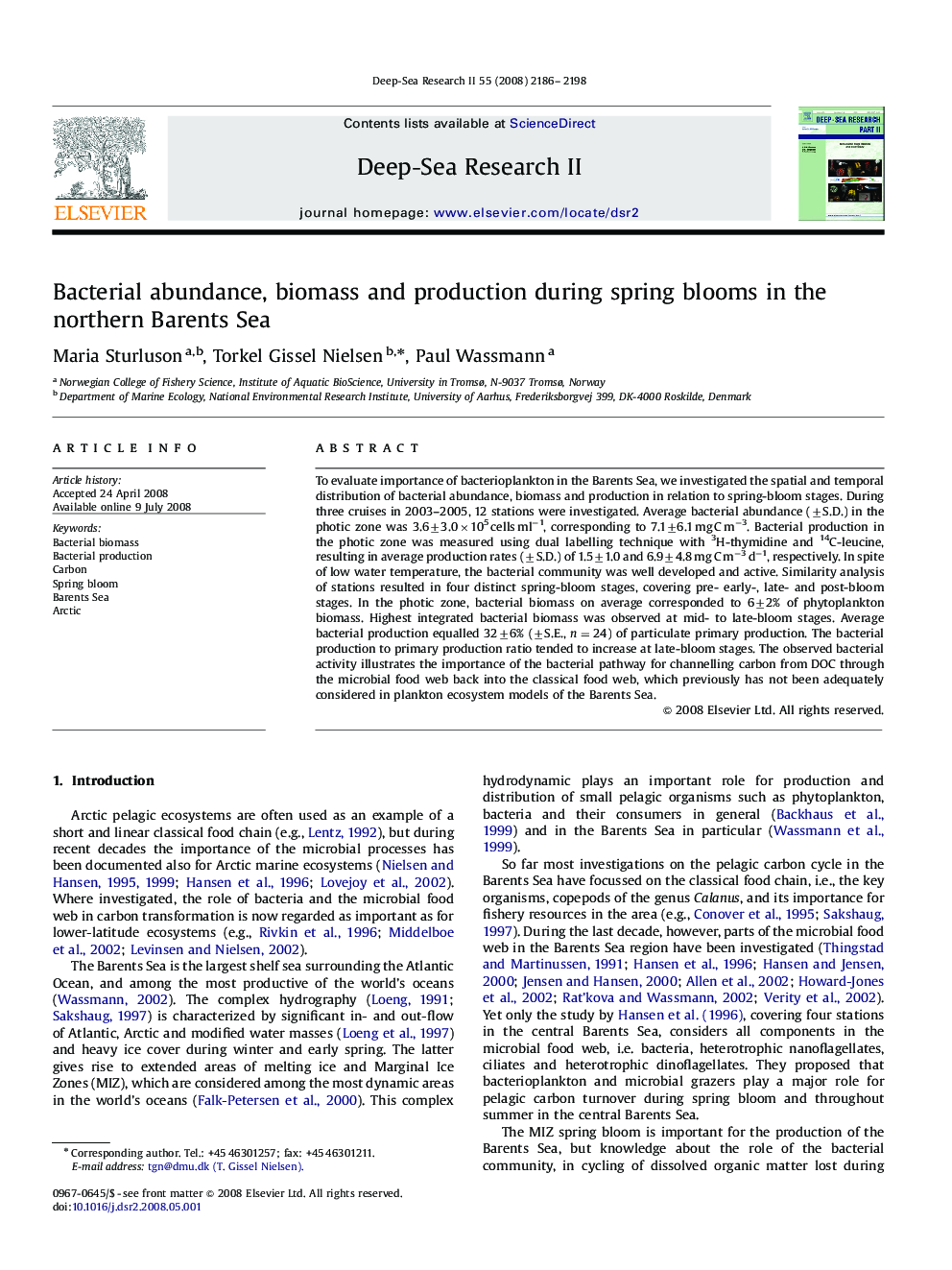| Article ID | Journal | Published Year | Pages | File Type |
|---|---|---|---|---|
| 4537943 | Deep Sea Research Part II: Topical Studies in Oceanography | 2008 | 13 Pages |
To evaluate importance of bacterioplankton in the Barents Sea, we investigated the spatial and temporal distribution of bacterial abundance, biomass and production in relation to spring-bloom stages. During three cruises in 2003–2005, 12 stations were investigated. Average bacterial abundance (±S.D.) in the photic zone was 3.6±3.0×105 cells ml−1, corresponding to 7.1±6.1 mg C m−3. Bacterial production in the photic zone was measured using dual labelling technique with 3H-thymidine and 14C-leucine, resulting in average production rates (±S.D.) of 1.5±1.0 and 6.9±4.8 mg C m−3 d−1, respectively. In spite of low water temperature, the bacterial community was well developed and active. Similarity analysis of stations resulted in four distinct spring-bloom stages, covering pre- early-, late- and post-bloom stages. In the photic zone, bacterial biomass on average corresponded to 6±2% of phytoplankton biomass. Highest integrated bacterial biomass was observed at mid- to late-bloom stages. Average bacterial production equalled 32±6% (±S.E., n=24) of particulate primary production. The bacterial production to primary production ratio tended to increase at late-bloom stages. The observed bacterial activity illustrates the importance of the bacterial pathway for channelling carbon from DOC through the microbial food web back into the classical food web, which previously has not been adequately considered in plankton ecosystem models of the Barents Sea.
